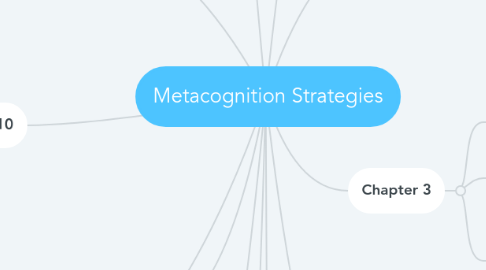
1. Chapter 6
1.1. Reading builds vocabulary
1.2. Discuss in study groups
1.2.1. Gain different perspectives
1.3. All the textbooks are not the same
1.3.1. Some are easier to comprehend
2. Chapter 7
2.1. Find active teaching professors
2.1.1. Ways that constantly put students in a learning process
2.2. Go to class
2.3. Practice certain behaviors
2.3.1. Use good behavior in class
3. Chapter 8
3.1. Get a tutor
3.2. Develop a daily study routine
3.3. Over learn material
3.3.1. Get the main idea or overall picture
4. Chapter 9
4.1. Do not plagiarize
4.2. Be relaxed and confident during test
4.2.1. Become emotionally prepared
4.3. Prepare physically
4.3.1. Sleep, diet, and exercise
5. Chapter 10
5.1. Evaluate sources
5.1.1. RElevence
5.1.2. Authority
5.1.3. Biased
5.2. Use proper writing tactics
5.2.1. Pre-write, draft, then revise
5.3. Take advantage of libraries
5.3.1. Use the resources
5.3.2. Consult the librarian
6. Chapter 11
6.1. Take advantage of diverse environment
6.1.1. Meet new people
6.1.2. People come from backgrounds
6.2. Be aware of racism and discrimination
6.3. Understand, appreciate, and embrace diversity
7. Chapter 12
7.1. Create a budget and use it
7.2. Manage GPA and credit score
7.2.1. Employers check both
7.3. Use financial management skills
7.3.1. Difference beweteen needs and wants
7.3.2. Share expenses
7.3.3. Live on campus
7.3.4. Low cost transportation
7.3.5. Discount entertainemnt
7.3.6. Second hand goods
7.3.7. No unnecessary fees
8. Chapter 3
8.1. Emotional Intelligence definition
8.1.1. Ability to recognize and use emotions properly
8.2. Emotions after reactions
8.2.1. Control negative emotions
8.2.2. Motivation, resilience, balance, and anger
8.3. Improving Emotional Intelligence
8.3.1. Identify strengths and weakness
8.3.2. Set realistic goals
8.3.3. Check progress
9. Chapter 1
9.1. Determination, Resolve, Goal
9.2. SMART Goals
9.2.1. Specific
9.2.2. Measurable
9.2.3. Attainable
9.2.4. Relevant
9.2.5. Time Frame
9.3. Goal setting
9.3.1. Personal strengths
9.3.2. Tough questions
9.3.3. Establish goals
10. Chapter 2
10.1. Use a planner
10.2. To-do list
10.3. Identify time management problems
10.3.1. Procrastination
10.3.2. Over scheduling
10.3.3. Distractions
10.3.4. movivation
11. Chapter 4
11.1. Use communication inventories
11.1.1. Verbal/linguistic
11.1.2. Logical/mathematical
11.1.3. Visual/spatial
11.1.4. Bodily/kinesthetic
11.1.5. Musical/rhythmic
11.1.6. Interpersronal
11.1.7. Intrapersonal
11.1.8. Naturalistic
11.2. Be aware of potential learning disabilities
11.3. Adapt based on the multiple intelligences
12. Chapter 5
12.1. Avoid faulty reasoning
12.2. Critical thinking
12.2.1. Ask questions
12.2.2. Consider POV
12.2.3. Challenge and Examine
12.3. Bloom's Taxonomy
12.3.1. 1. Knowledge
12.3.2. 2. Comprehension
12.3.3. 3. Application
12.3.4. 4. Analysis
12.3.5. 5. Synthesis
12.3.6. 6. Evaluation

